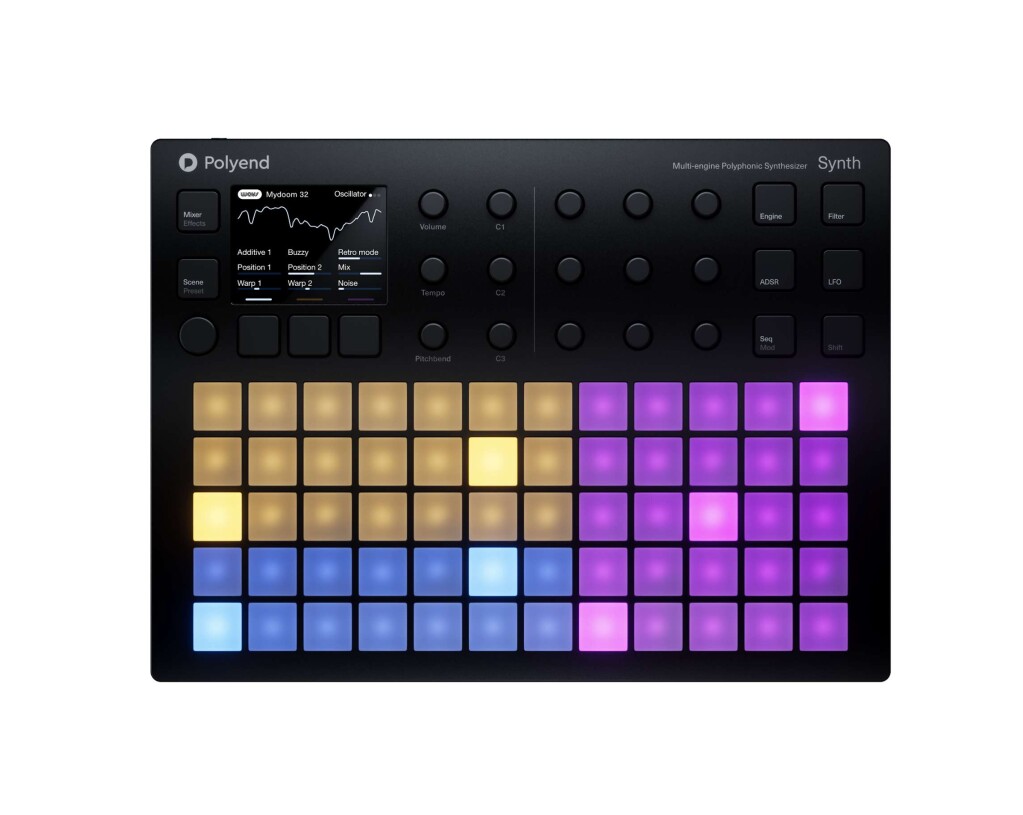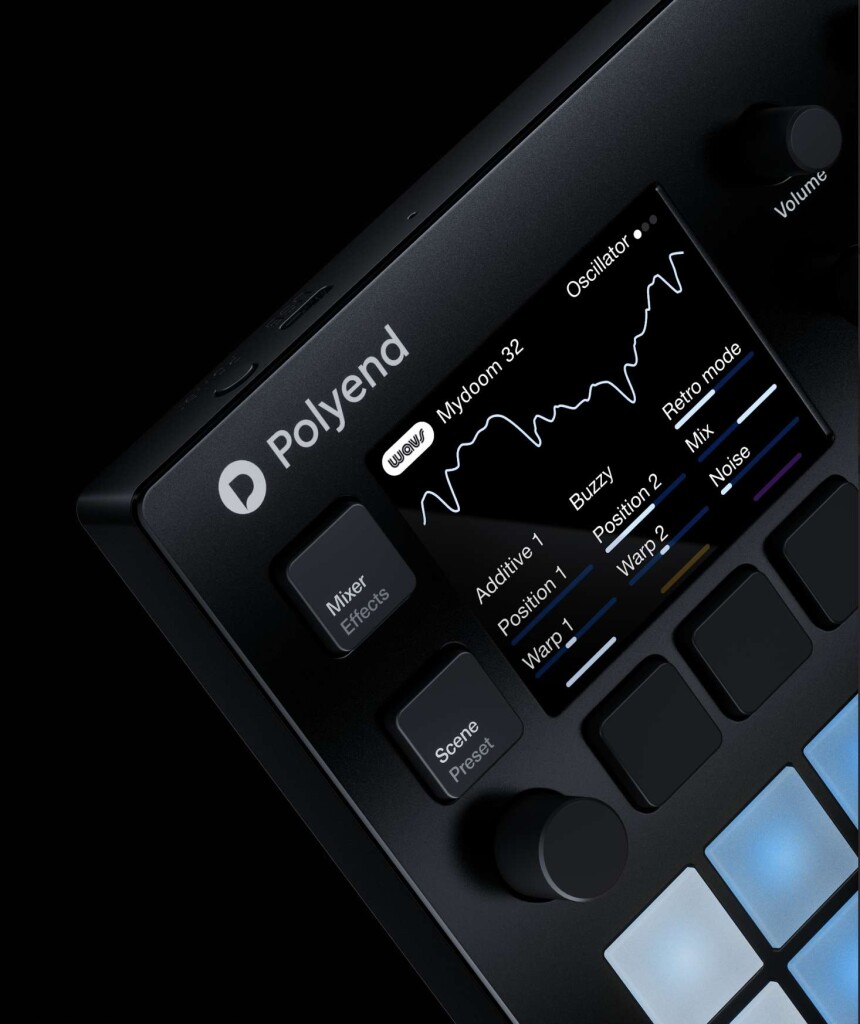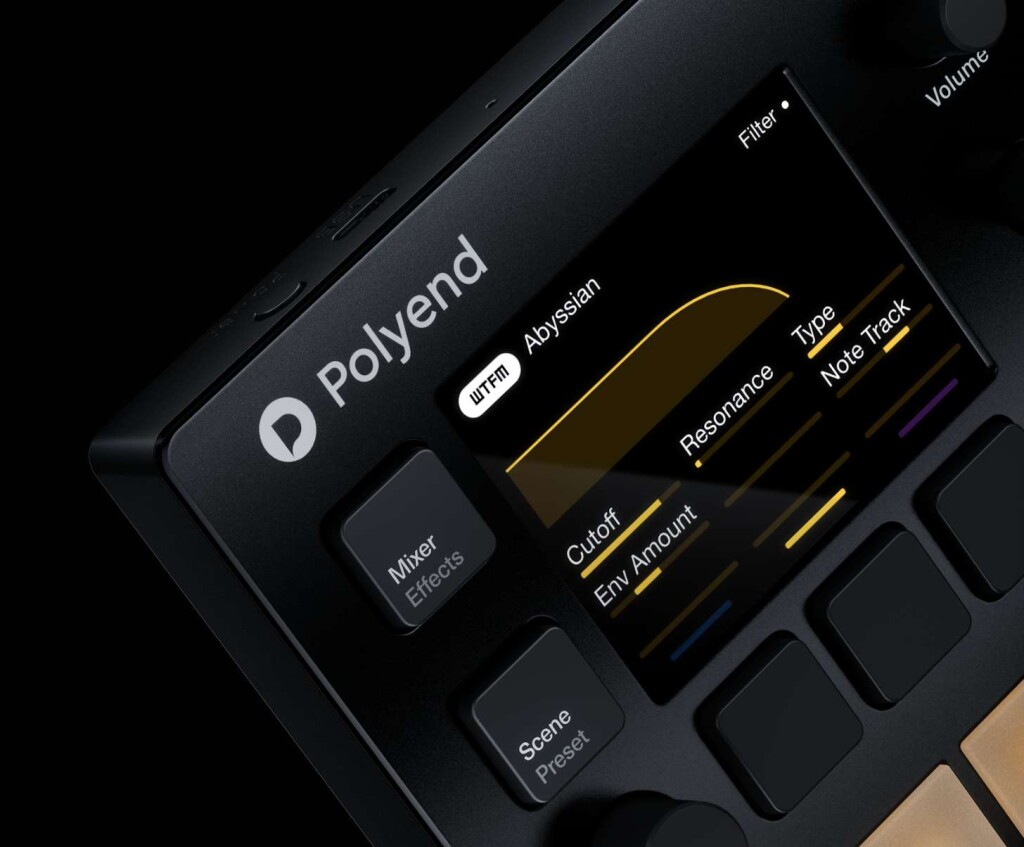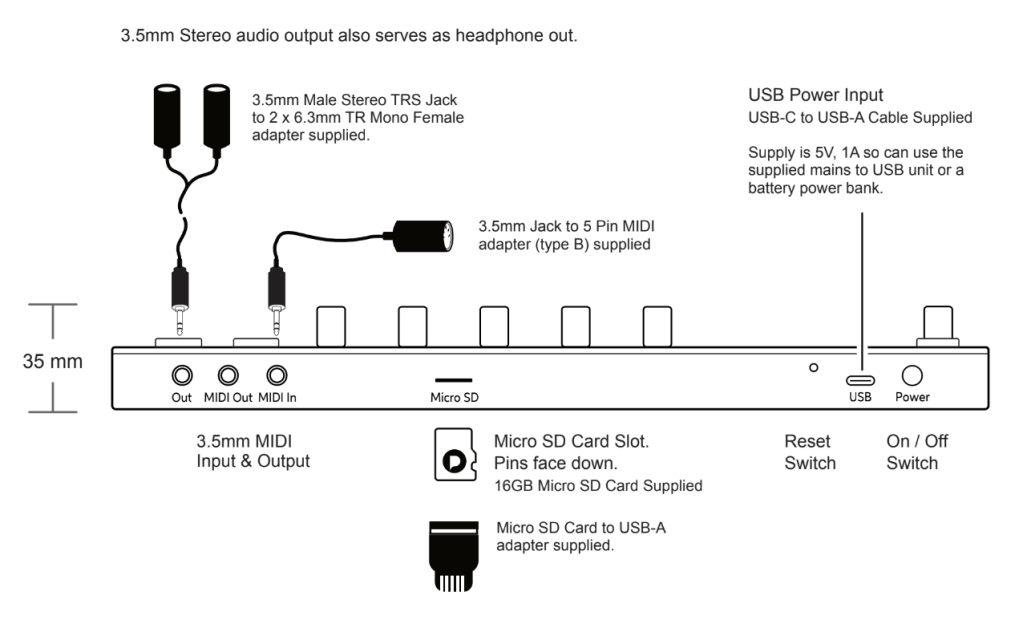If what you crave is not so much a groovebox/sequencer as a synthesizer, behold the latest from Polyend. Simply dubbed Synth, it’s a 499 $/€ instrument packed with playable synth engines. And you could see it as the first dedicated synth instrument from the company since their original flagship Medusa.
https://www.youtube.com/watch?v=xEaKVHuYe3A

Okay, let me not get too far ahead of myself. Yes, there are sequencers on the Synth, as on the Polyend Play. (I realized I didn’t mention the Play as a competitor to Ableton Move, which it very much is – even if I got distracted thinking about trackers from Polyend and others. Probably more Play than Synth is applicable, but I’m sure people will be making purchase decisions between these, even if they aren’t exactly the same.)
The Polyend Synth has two big features going for it. One, it’s packed with synth engines. Two – and this is a simple one – they finally let you put three synths on the main grid instead of just one. That’s the colored areas you see in the product image. Now, plenty of grids have done this, back to patches for the monome and Yamaha Tenori-On, each of which could be configured as multi-timbral performance grids. But for whatever reason, boxes from big makers like Ableton, Native Instruments, and Elektron often make you either trigger different synths via the sequencer or switch modes to play different parts. Synth is set up with the assumption you might play multiple sounds from that main grid. (Synth is also the latest device, like Move, to realize some of the vision of the ill-fated dadamachines composer pro.)
Now, because of the ready availability and affordability of more powerful embedded ARM platforms, I think we’ll be seeing a lot of these sorts of devices soon. But Polyend has a lot of experience with making these devices already. I suspect what will make-or-break Synth for you is the onboard synth engines. There are eight to choose from, with three playable at once and a bunch of performance modes.

- PHZ phase distortion, inspired by the CZ-101 with additional modes
- ACD acid-ish fun with single-oscillator Roland monosynth-inspired design (SH-101, TB-303)
- VAP polysynth, inspired by the Prophet 6
- PMD physical modeling, with “roots in … techniques from Mutable Instruments” – think exciter + resonator, with Strike, Mallet, and Air Flow options
- GRAIN granular synth with user-loaded samples and Burst mode which can sync grains rather than have them only as asynchronous clouds, plus the ability to play paraphonic chords
- WAVS 2-oscillator custom wavetable synth with a Retro mode (aliased wavetables)
- WTFM FM + wavetable architecture
I wish some synth makers would diverge a bit from the Mutable Instruments route, among others – to say nothing of Roland – so take note. But it is a nice lineup. And having the new PMD and GRAIN modes is exciting – maybe enough so that users of other Polyend portables will consider adding this for extra synths under the hands.

From there, add playing modes and effects:
The grid features custom setup – choose vertical or horizontal orientations, for instance, a feature we saw some years ago as a custom setup on Novation Launchpad (plus custom monome and Launchpad configurations before that). There’s also pressure/aftertouch, as on Polyend’s other grids. And you can configure scale, etc., which follows Ableton Push closely though with some extras like – hello Ukrainian Marva. As on Move, there’s unfortunately no tuning support, which I think is a missed opportunity. But you do have tons of per-synth chord options for those of you happy to embrace Western harmony.
FX:
- MOD chorus/phaser/flanger
- DEL modeled analog delay with “tape-like flutter”
- REV with Warp mode
It’s worth noting what isn’t here. You can import wavetables, but there’s no sampling capability. And it’s only 8-voice polyphonic, which works well for the “play it like an instrument” mode but is more restricted versus some of the competition.
To answer some other questions, yes, MIDI is available over USB, too. There are no dedicated sync jacks, though, and no CV/gate, just like on the Move. Someone or other has an opportunity here, ahem.
As for comparing Move and Synth – which I’m sure people will be doing – they’re more different than they might seem, and Move’s value proposition is competitive. Move has battery power, a built-in mic, sampling capability (up to 4 minutes on Move – Synth just does simple wavetable import), and while it doesn’t have Synth’s array of engines, it does have fantastic effects and the excellent Drift and Wavetable with all their options, even before you get to Ableton’s Drum Sampler and Melodic Sampler. Plus you can use Move as a Live controller, which is about half of what I’ve been doing with it lately.
Oh yeah, and about Synth’s ports – you’re still in MIDI dongle land (which is why I don’t so much mind the USB-A port on Move), but you do have everything there, plus a microSD slot:

More from Polyend: https://polyend.com/
And what about the Polyend hardware you already own? They’ve been busy on that, too, with a slew of firmware updates:
A Week of Polyend [forum discussion]
Video demos/reviews:
More: https://polyend.com/
And yes, this does return me to the beauty of Medusa, which was also rooted in FM and wavetable synthesis. I still love Medusa, in all its quirky design and Dreadbox analog bits. I mean, sure, Synth is way more practical, powerful, and playable. But Medusa is the wonderfully weird place where it all started.